Project Highlights
Many Low Impact Development practices were utilized within the Birnamwood Drive:
- Depressed center median, including native landscaping
- Check dams – designed to slow down the velocity of water flowing through the swale and extend time of concentration
- FocalPoint HPMBS adjacent to each of the extreme event outfalls to filter contaminates out of the water prior to discharge into Spring Creek.
- plantings were chosen based on their ability to maximize the filtration of larger debris particles, to adapt to the conditions for this area, and to minimize maintenance.
Birnamwood Drive is located in northern Harris County, east of Spring, Texas. The existing roadway runs north/south between Fern Hill Drive and intersects Cypresswood Drive. The new section of Birnamwood is approximately 0.68 miles in length and extends from Fern Hill Drive north to Spring Creek Drive. This project is the first roadway project in the Houston area to implement Low Impact Development (LID) / Green Stormwater Infrastructure (GSI) techniques and is viewed by Harris County as a stepping stone to implementing LID as its default roadway design approach throughout the County.
This roadway was required to deal with a very large (27 AC) drainage area, and for the sake of additional factors safety, despite surrounding park lands, the drainage area was to be considered .95% impervious. A desire not to stray too far from standard designs for this initial project was an important consideration in this design. Safety considerations were also important in a number of design decisions, including the utilization of full curbs on this roadway, limitations on ponding depth in the swale and protection of sight lines related to the vegetation. Stormwater enters the depressed center media via false-backed curb inlets.
During the design and consultation phase of Birnamwood Drive, it was important to consider all possible problems that might arise in the construction and maintenance of the roadway. Utilizing a dry swale as the primary conveyance feature, the design team explored the various biofiltration medias available for filtering pollutants.
Option 1: Typical Low Flow Media
The design team first examined typical engineered biofiltration medias that have a flow rate of less than 5” per hour and are relatively inexpensive to make and supply. However, due to the low flow rate a designer is required to use almost 900 SF of bioretention surface area per acre of impervious drainage surface. This requires a lot of real estate, and extensive costs related to excavation, stone, underdrain, and media. The upkeep of these larger systems are also much more difficult due to the roadway maintenance organization’s sensitivity to specialized maintenance needs.
Option 2: High Flow Media
High performance media design which offers a flow rate of 100” per hour was a better answer. For the needs of Birnamwood Drive, only 70 SF of infiltration bed surface area per acre treated was required. The small footprint, allowed the design team to use two small Biofiltration systems, one in each of the two swales in the center median of the roadway, leaving everything upstream of the systems to be designed with traditional landscaping and maintained without LID related considerations. Lower construction and maintenance costs, along with improved constructability made the high flow media design the logical choice for Birnamwood Drive.
FocalPoint HPMBS
The FocalPoint High-Performance Modular Biofiltration System (HPMBS) is a combination of a high performance open cell underdrain, a bridging mesh that is clog proof, bridging stone, and a high performance biofiltration media that flows at a rate of over 100” per hour. What this unique combination of parts creates is a system that provides unsurpassed water quality and drainage characteristics. For the purpose of Birnamwood Drive, FocalPoint was able to do in 2,000 SF what the traditional bioswale design would have required a full acre of biofiltration to accomplish.
Low Impact Development
Many Low Impact Development practices were utilized within the Birnamwood Drive depressed center median, including native landscaping, check dams, and the FocalPoint HPMBS adjacent to each of the extreme event outfalls. The plantings were chosen based on their ability to maximize the filtration of larger debris particles, to adapt to the conditions for this area, and to minimize maintenance. The earthen check dams were designed to slow down the velocity of water flowing through the swale and extend time of concentration while the FocalPoint HPMBS was in place to filter contaminates out of the water prior to discharge into Spring Creek. In extreme rainfall events, runoff not filtered through the FocalPoint HPMBS is designed to bypass through a pipe directly to the outfall. The detention capacity of the center swale eliminated the need for offsite detention, an important but often uncalculated cost savings on LID-based roadways.

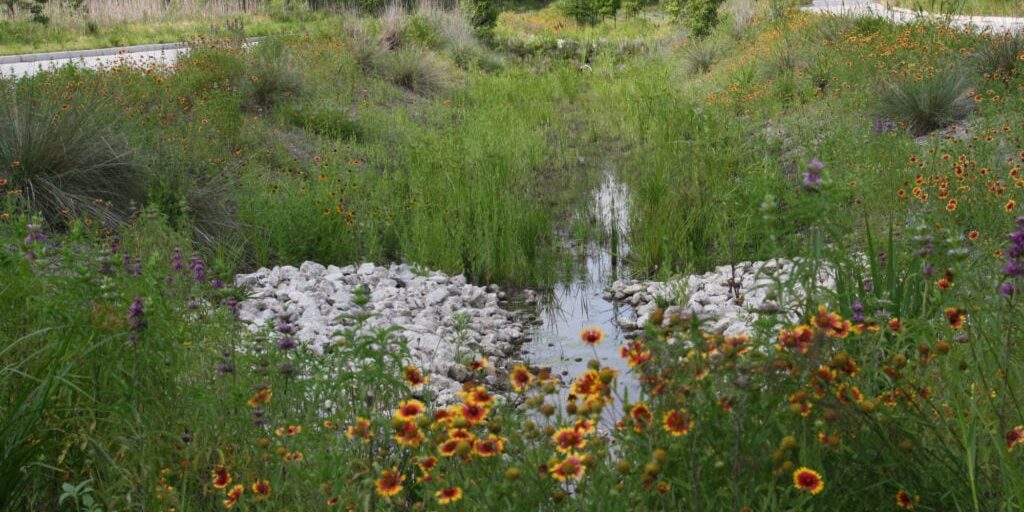
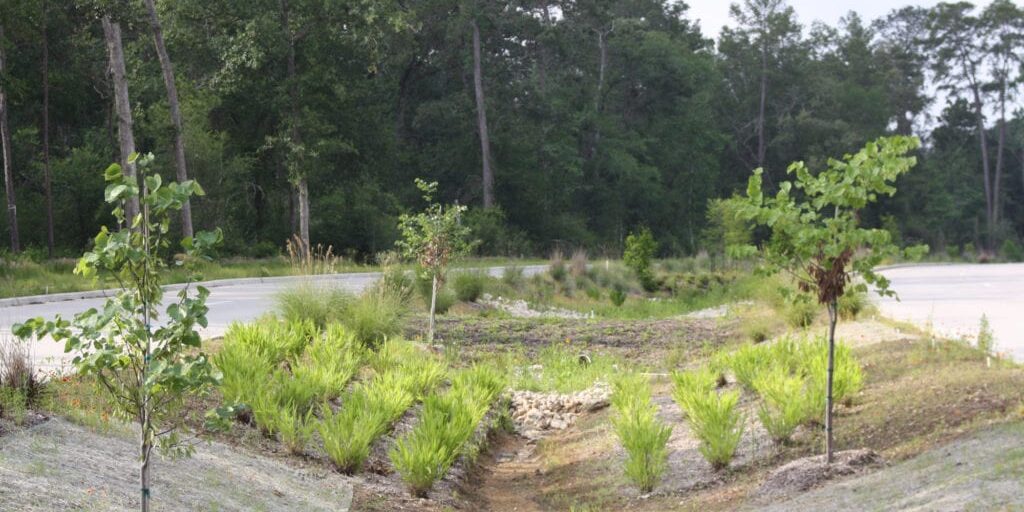
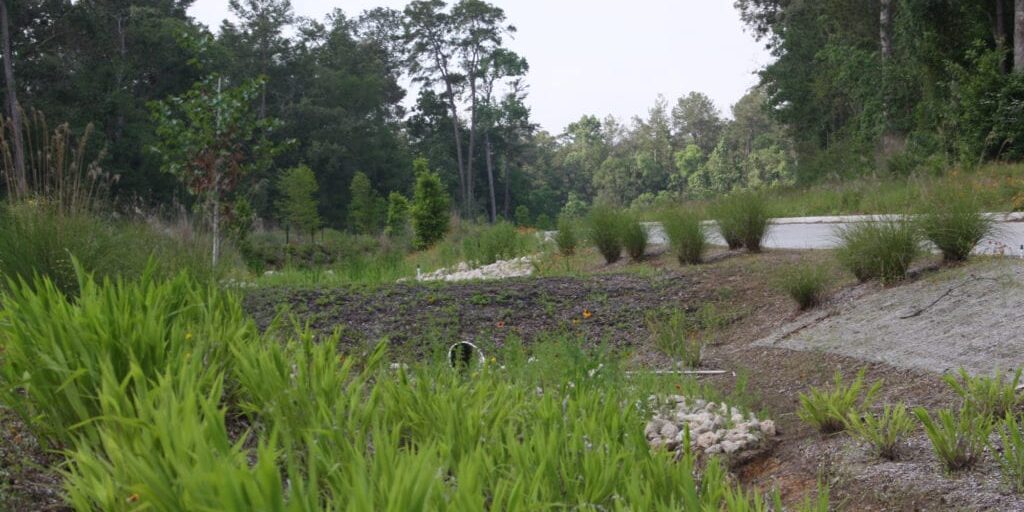
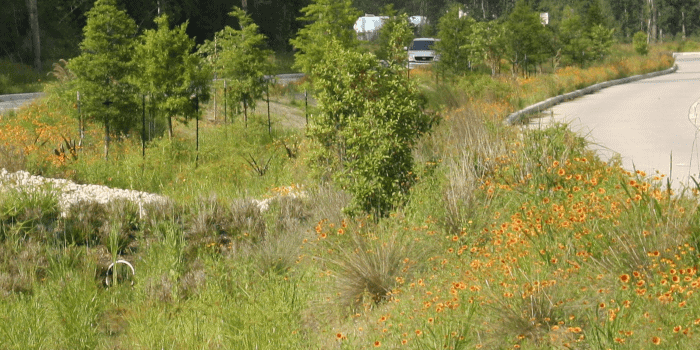


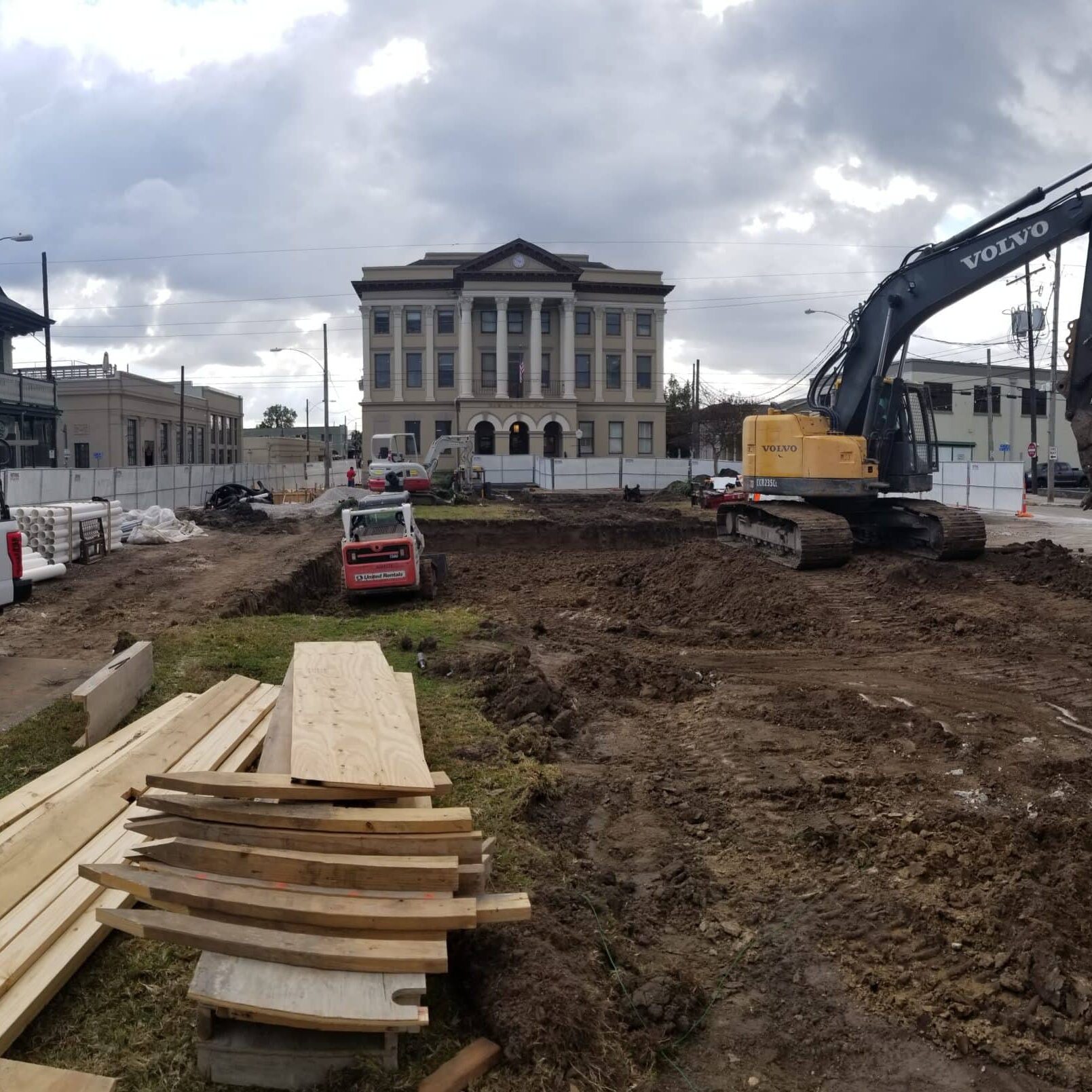


 SIGN UP TO RECEIVE THE LATEST NEWS
SIGN UP TO RECEIVE THE LATEST NEWS